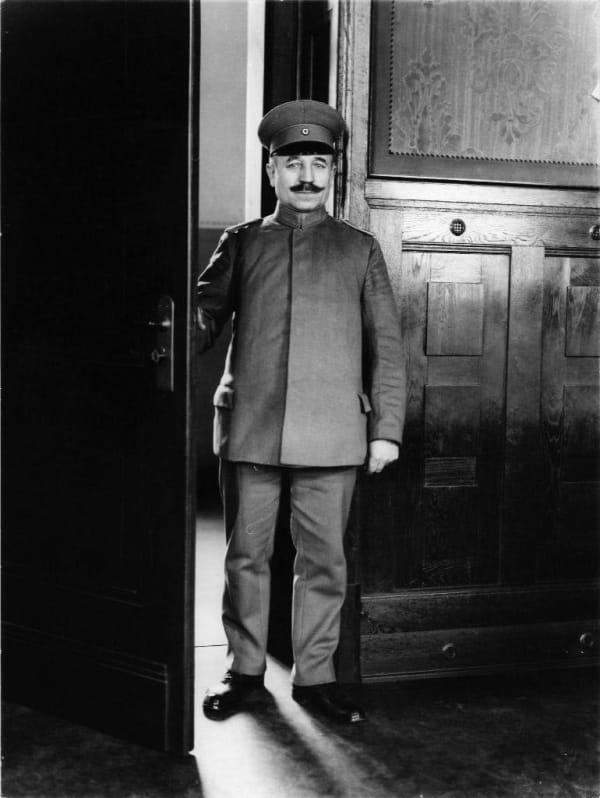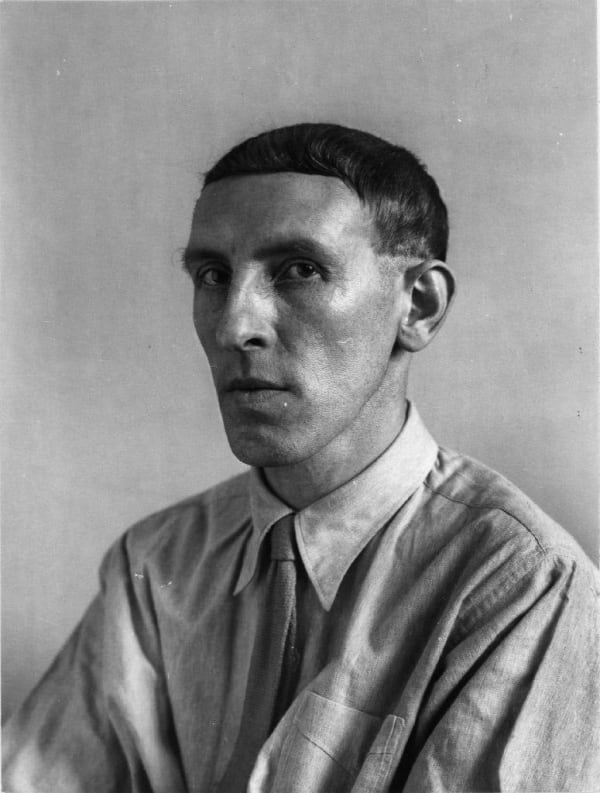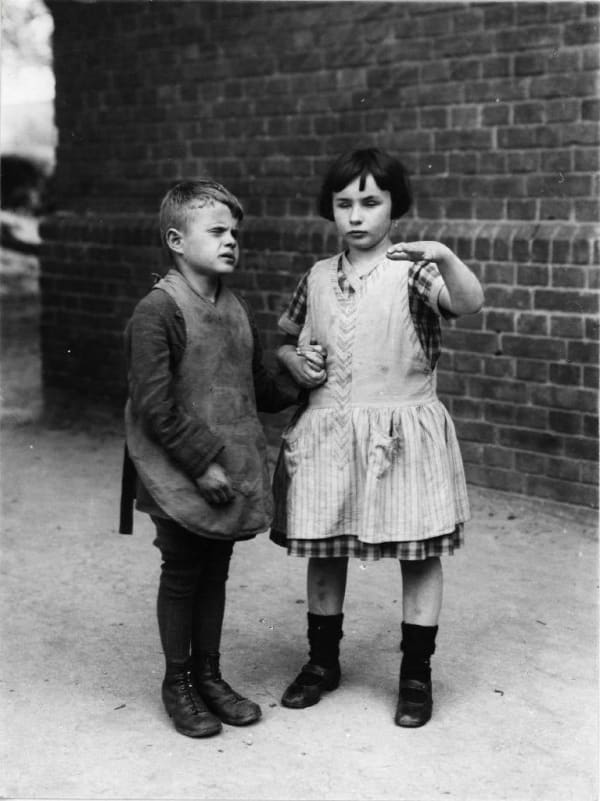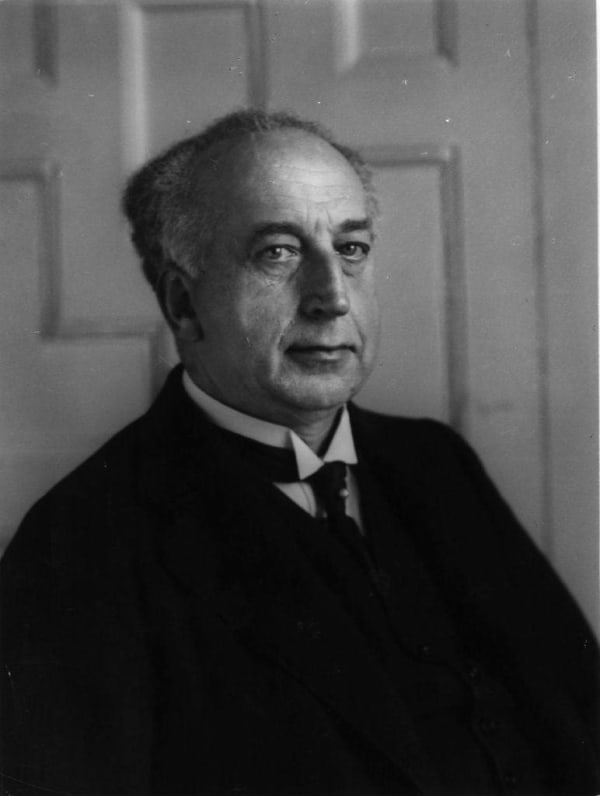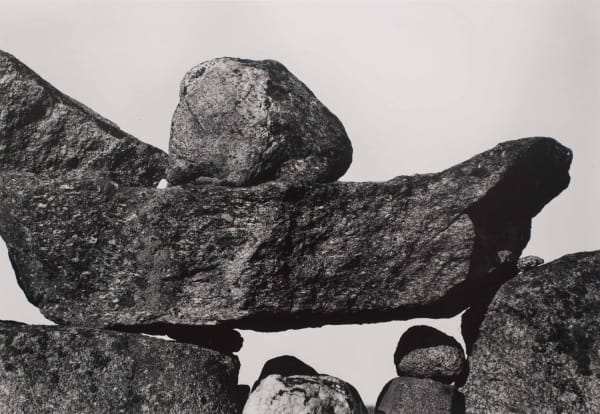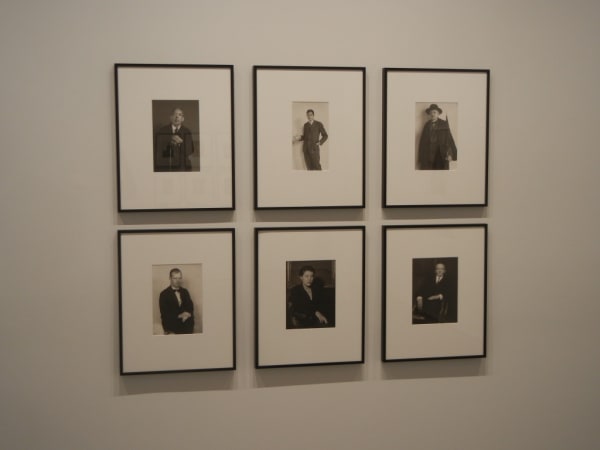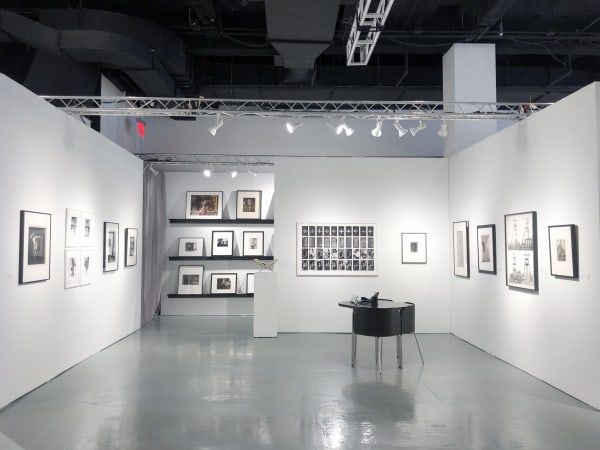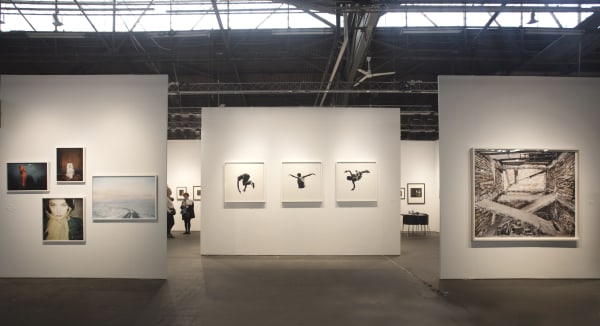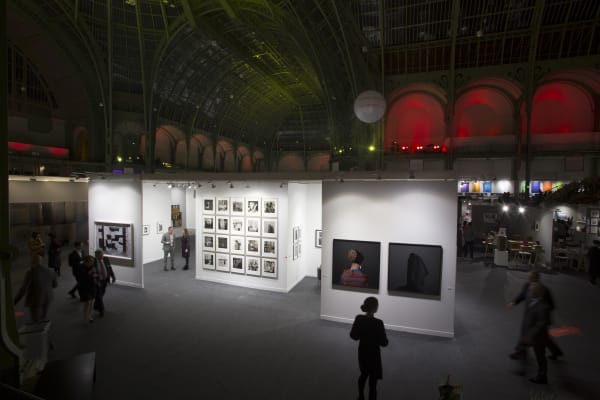August Sander (1876 - 1964) was born in Herdorf, Germany as the son of a carpenter working in the mining industry. While working at a local mine, Sander first learned about photography by assisting a photographer employed by the mining company. Eventually, with the financial support from his uncle, Sander bought photographic equipment and set up his own darkroom. During his time in the military (1897 - 1899), he worked as a photographer's assistant and spent the next years wandering across Germany. In 1901, he started working for a photo studio in Linz, Austria, where he eventually became a partner (1902), and then its sole proprietor (1904). In 1909, he left Linz and set up a new studio in Cologne, Germany.
In the early 1920s, Sander joined the Group of Progressive Artists in Cologne and began plans to document contemporary society in a series of portraits. In 1927, Sander and writer Ludwig Mathar traveeled through Sardinia, Italy for three months where he took around 500 photographs. Unfortunately, a planned book detailing his travels was not completed. Sander's Face of our Time was published in 1929, containing a selection of sixty portraits from his series, People of the 20th century. Under the Nazi regime, Sander's work and personal life were greatly constrained. His son Erich, who was a member of the left-wing Socialist Workers' Party (SAP), was arrested in 1934 and sentenced to 10 years in prison, where he died ten years later in 1944, shortly before the end of his sentence. Sander's book, Face of our Time was seized in 1936 and the glass plate negatives, destroyed. Around 1942, during World War II, he left Cologne and moved to a more rural area, allowing him to save most of his negatives. His studio was eventually destroyed during a bombing raid in 1944.
August Sander died in Cologne, Germany. Although his work contains a wide range of subjects, from landscapes, nature, architecture, to street photography, Sander was most well known for his portraiture, as exemplified in his series, People of the 20th Century. In this series, he aims to show a cross-section of society in Germany during the Weimar Republic. Divided into seven sections: The Farmer, The Skilled Tradesman, Woman, Classes and Professions, The Artists. The City, and The Last People (houseless persons, veterans, etc.). By 1945, Sander's archive included over 40,000 images.
-
 August SanderCountry Girls, 1925Gelatin silver print, printed c. 1970 by Gunther Sander9 5/8 x 7 1/8 in (24.4 x 18.1 cm)
August SanderCountry Girls, 1925Gelatin silver print, printed c. 1970 by Gunther Sander9 5/8 x 7 1/8 in (24.4 x 18.1 cm) -
 August SanderGerichtsdiener (Court usher), 1932Gelatin silver print, printed c. 1970 by Gunther Sander9 5/8 x 7 1/8 in (24.4 x 18.1 cm)
August SanderGerichtsdiener (Court usher), 1932Gelatin silver print, printed c. 1970 by Gunther Sander9 5/8 x 7 1/8 in (24.4 x 18.1 cm) -
 August SanderDer Maler (Painter, Heinrich Hoerle), Köln, c. 1927Gelatin silver print, printed c. 1970 by Gunther Sander9 5/8 x 7 1/8 in (24.4 x 18.1 cm)
August SanderDer Maler (Painter, Heinrich Hoerle), Köln, c. 1927Gelatin silver print, printed c. 1970 by Gunther Sander9 5/8 x 7 1/8 in (24.4 x 18.1 cm) -
 August SanderBlinde Kinder (Blind Children), Düren, c. 1930Gelatin silver print9 5/8 x 7 1/8 in (24.4 x 18.1 cm)
August SanderBlinde Kinder (Blind Children), Düren, c. 1930Gelatin silver print9 5/8 x 7 1/8 in (24.4 x 18.1 cm) -
 August SanderHofmarschall (Estate Manager), Kuno Graf von Hardenberg, c. 1930Gelatin silver print, printed c. 1970 by Gunther Sander9 5/8 x 7 1/8 in (24.4 x 18.1 cm)
August SanderHofmarschall (Estate Manager), Kuno Graf von Hardenberg, c. 1930Gelatin silver print, printed c. 1970 by Gunther Sander9 5/8 x 7 1/8 in (24.4 x 18.1 cm)
-

20th Anniversary Exhibition
REWIND 16 Dec 2021 - 19 Feb 2022 Gallery ExhibitionsBruce Silverstein Gallery is pleased to announce REWIND , a celebration of our 20th anniversary. Featuring works selected from over one hundred exhibitions, REWIND is an opportunity to revisit the...Read more -

August Sander / Bernd and Hilla Becher
A Dialogue 1 May - 7 Jun 2014 Gallery ExhibitionsBruce Silverstein in collaboration with Sonnabend Gallery is pleased to present August Sander / Bernd and Hilla Becher: A Dialogue , curated by Hilla Becher.Read more


